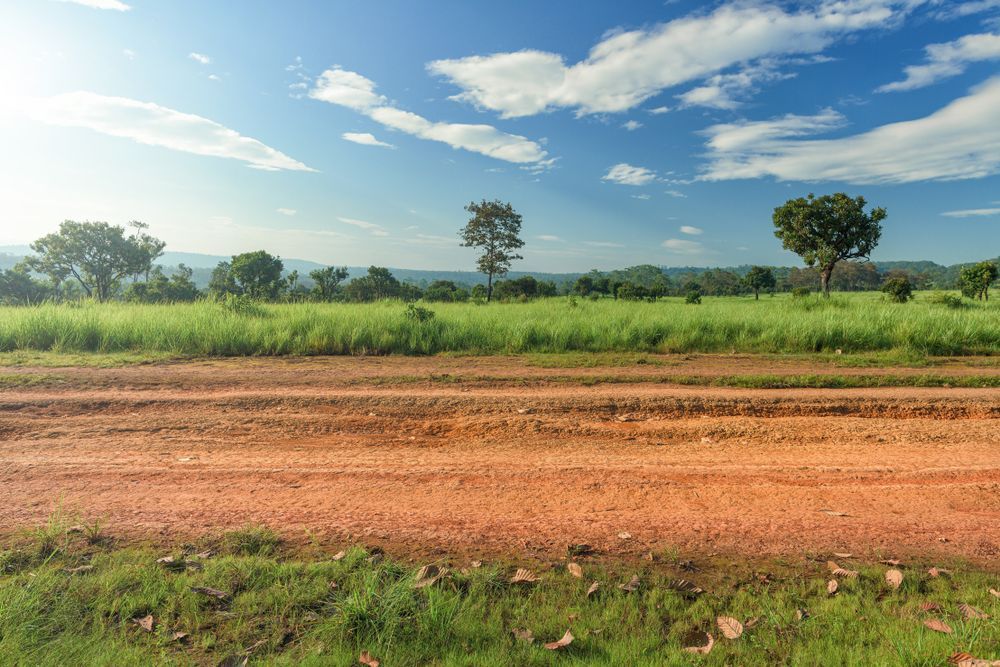Fine and Rough Grading
Fine grading involves removing debris that makes the surface uneven, such as rock, and adding an appropriate type of topsoil. What kind of topsoil a worker uses for fine grading depends on the final purpose of the land.
Rough grading is the process of achieving the right overall shape and slope. Often grading involves flattening the land, but it should always be done by a professional who understands slope and drainage

Fine grading focuses on precise surface preparation and aesthetics while rough grading lays the groundwork by shaping the land and establishing basic contours. Both processes are essential for successful land development and landscaping projects, offering a range of benefits depending on the project's goals and requirements.
Rough Grading Benefits
Initial Land Shaping
Rough grading is considered the first stage of land preparation and it involves the removal of large debris, rocks, and vegetation to create a rough outline of the site. This process establishes the basic contours and elevations of the land, providing a foundation for further grading work.
Erosion Control:
Rough grading also helps to control erosion by shaping the land to prevent soil runoff and sedimentation. By establishing proper slopes and drainage patterns, rough grading mitigates the risk of erosion and maintains soil stability during construction.
Site Preparation
Rough grading prepares the land for any subsequent construction activities by clearing obstacles and creating a workable surface for heavy machinery and equipment. This initial preparation is also essential for ensuring safety and efficiency on the construction site.
Cost Savings
Rough grading can help identify any potential challenges and constraints early in the project. This allows for adjustments to be made before more expensive grading work is carried out. You can avoid costly rework and delays can be minimized by addressing major grading issues during the rough grading phase.
Environmental Protection
Rough grading can incorporate measures to protect sensitive environmental areas, such as wetlands and wildlife habitats. By carefully planning the grading process, developers can minimize disturbance to natural ecosystems and comply with environmental regulations.
Fine Grading Benefits
Leveling the Surface
Fine grading involves smoothing out the surface of the land to ensure it is level and even. This is essential for various construction projects, such as building foundations, roads, and landscaping. A level surface provides stability and facilitates proper drainage.
Improving Drainage
Fine grading helps to establish proper slope and drainage patterns on the land, directing water away from structures and preventing erosion. This is crucial for preventing water damage and ensuring the longevity of infrastructure.
Enhancing Aesthetics
Fine grading creates a polished, finished appearance for the land, making it more visually appealing. This is particularly important for landscaping projects, where a smooth and level surface provides a better canvas for planting and designing outdoor spaces.
Preparing for Pavement
In road construction projects, fine grading prepares the ground for the installation of pavement by creating a smooth and compacted base. Proper fine grading ensures the pavement will be even and durable, reducing the risk of cracks and potholes.
Optimizing Land Use
Fine grading allows for efficient use of land by maximizing usable space and minimizing wasted areas. By leveling the surface, it becomes easier to plan and construct buildings, parking lots, and other structures.
Land development in Richmond, Henrico, Hanover, Goochland, Powhatan, King William, Louisa, Caroline County, King and Queen, West Point, Essex, Tappahanock and Warsaw
CONTACT US
Email: capecelsllc@gmail.com
Phone: 804-512-3942
AVAILABILITY
- Mon - Sun
- Appointment Only
Capece Land Solutions | Site by RCC
